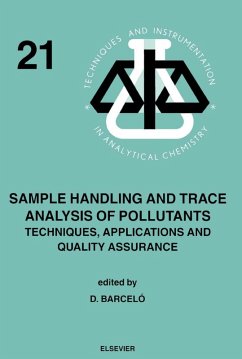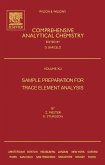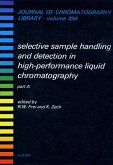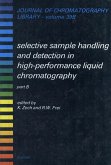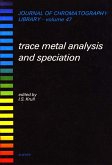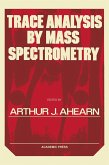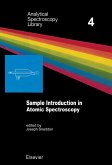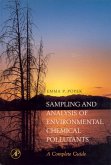This book is an updated, completely revised version of a previous volume in this series entitled: ENVIRONMENTAL ANALYSIS -- Techniques, applications and quality assurance. The book treats different aspects of environmental analysis such as sample handling and analytical techniques, the applications to trace analysis of pollutants (mainly organic compounds), and quality assurance aspects, including the use of certified reference materials for the quality control of the whole analytical process. New analytical techniques are presented that have been developed significantly over the last 6 years, like solid phase microextraction, microwave-assisted extraction, liquid chromatography-mass spectrometric methods, immunoassays, and biosensors.
The book is divided into four sections. The first describes field sampling techniques and sample preparation in environmental matrices: water, soil, sediment and biota.
The second section covers the application areas which are either based on techniques, like the use of gas chromatography-atomic emission detection, immunoassays, or coupled-column liquid chromatography, or on specific application areas, like chlorinated compounds, pesticides, phenols, mycotoxins, phytotoxins, radionuclides, industrial effluents and wastes, including mine waste.
Validation and quality assurance are described in the third section, together with the interpretation of environmental data using advanced chemometric techniques.
The final section reports the use of somewhat advanced analytical methods, usually more expensive, less routinely used or less developed, for the determination of pollutants.
The book is divided into four sections. The first describes field sampling techniques and sample preparation in environmental matrices: water, soil, sediment and biota.
The second section covers the application areas which are either based on techniques, like the use of gas chromatography-atomic emission detection, immunoassays, or coupled-column liquid chromatography, or on specific application areas, like chlorinated compounds, pesticides, phenols, mycotoxins, phytotoxins, radionuclides, industrial effluents and wastes, including mine waste.
Validation and quality assurance are described in the third section, together with the interpretation of environmental data using advanced chemometric techniques.
The final section reports the use of somewhat advanced analytical methods, usually more expensive, less routinely used or less developed, for the determination of pollutants.
Dieser Download kann aus rechtlichen Gründen nur mit Rechnungsadresse in A, B, BG, CY, CZ, D, DK, EW, E, FIN, F, GR, HR, H, IRL, I, LT, L, LR, M, NL, PL, P, R, S, SLO, SK ausgeliefert werden.

